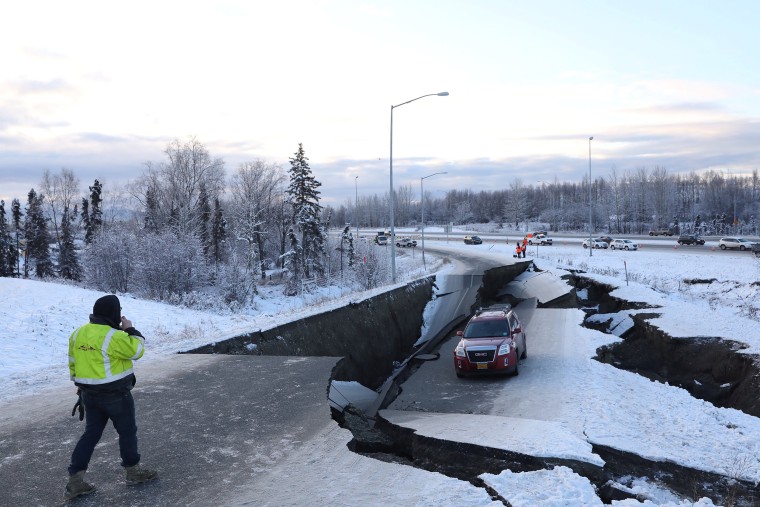A 7.0 earthquake eight miles north of Los Angeles, with millions of people within its reach, would likely be devastating.
In fact, the 6.7 Northridge Earthquake in 1994 killed 72 people, injured more than 9,000 and caused $25 billion in damage. The epicenter was 20 miles west-northwest of Los Angeles, with an origin measured at 11 miles below the earth's surface.
Friday's Alaska shaker eight miles north of Anchorage (population 294,356) was nearly three times stronger, yet its impact was relatively minor.
No deaths were reported and damage was mostly limited to fractured roads, bridges, and buildings, officials said. Experts say the temblor's depth of an estimated 25 miles made all the difference.
"We’re lucky at this point that it was pretty deep," said Joey Yang, chair of civil engineering at the University of Alaska Anchorage. "By the time it reached the surface the energy dissipated quite a bit. It did not cause as much damage as you would think."
Still, the area was rocking.
"Make no mistake," U.S. Sen. Dan Sullivan, R-Alaska, told reporters, "this was a big one."
Yang said he was on campus and dove under a desk as books and other items tumbled from shelves in his office. The temblor lasted for 1 minute, 14 seconds, and the professor said it felt like a long time.
"I was in my third floor in a fairly new, three-year-old steel-frame structure," he said. "I was scared."
While the 8:29 a.m. (12:29 p.m. ET) shaker might have been tamed by its depth, the soft sediment and adjacent mountains of the area's Cook Inlet might have amplified the shaking once the earthquake's waves reached the earth's surface, experts said.

"The waves come up and many are amplified by the basin," said Carl Tape, professor of geophysics at the University of Alaska Fairbanks. "It’s prone to damaging effects like liquefaction."
The shaker happened in a subduction zone where the Pacific Plate dives beneath the North American Plate, said University of Alaska Anchorage civil engineering professor Utpal Dutta.
Similar movement closer to the surface produced Alaska's "Great 9.2" earthquake of 1964, which the U.S. Geological Survey calls "the most powerful recorded earthquake in U.S. history."
That temblor had some benefits for modern day inhabitants of Anchorage — mainly that it helped inspire stricter building codes worldwide.
"Building codes mean something," Alaska Gov. Bill Walker told reporters Friday afternoon.
"They do have good building codes because they experience lots of large earthquakes," said USGS seismologist Elizabeth Cochran.
Added geophysics professor Tape, "Had this happened somewhere else, you might have seen deaths."
